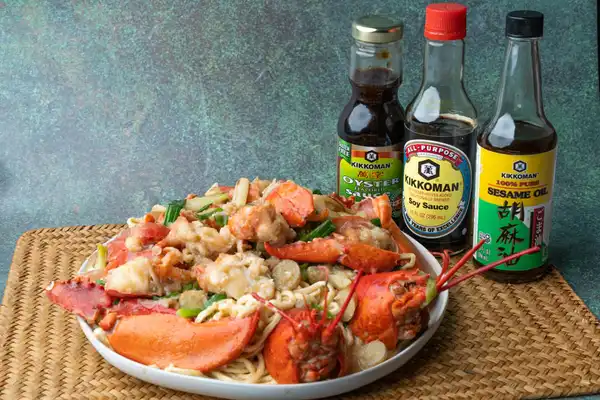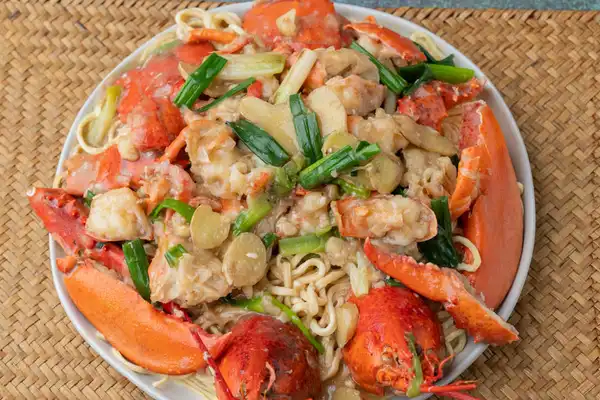Whenever you see a table that's been graced with a dish with lobster on it, you know that whoever is at the table is celebrating something at that moment. Lobster Yee Mein or 龍蝦伊麵 is a celebratory dish that you can find at wedding dinners, banquets, and casual dining. Its auspicious symbolism through the use of lobsters and long noodles make for a very special meal item.
The Lobster's Legacy
Lobsters are known as luhng ha (龍蝦) in Cantonese, which directly translates to "dragon prawn". As you might know, dragons are extremely auspicious animals in Chinese tradition, one of the 12 animals in the Chinese zodiac and symbols of power, luck, and strength. Paired with the tidings of a long life with our noodles, you'll often find lobster yi mein served at banquets and weddings.
Interestingly enough, at times throughout American history, lobsters were seen as a "poor-man's" food, fed to prisoners and servants. Nowadays, lobsters are a hot commodity in China. Since they're not native to the South China Sea, China literally flies millions of lobsters over from Maine, other parts of the US, and Canada. In restaurants in China, a red dragon could cost more than $100. Luckily for us, we get to make this dish at home for much, much less money.
Thank you, Kikkoman!
This recipe is brought to you in part by Kikkoman. My dad has been using Kikkoman flavors throughout his 50-year career as a chef, and it's a privilege to get to partner with them on such an iconic recipe, Lobster Yee Mein!
- Kikkoman products are a major flavor enhancer and bring out the “umami” taste, and helps balance and round out flavors
- Kikkoman® Less Sodium Soy Sauce is perfect for home cooks who are looking to cut down on their sodium levels, without sacrificing flavor.
- Kikkoman offers wide range of Gluten-Free Asian sauces, including Gluten-Free Oyster Sauce and Gluten-Free Hoisin Sauce
- The KikkomanUSA.com Chinese site offers easy Asian recipes that home cooks can enjoy any night of the week
You can learn more about Kikkoman and follow them on social media here:
- Website: https://www.KikkomanUSA.com
- Facebook: https://www.facebook.com/KikkomanChineseUSA (Kikkoman 萬字在美)
- Instagram: https://www.instagram.com/kikkomanusa_chinese/ (Kikkoman 萬字在美)
Check out a quick story summary of our recipe!



